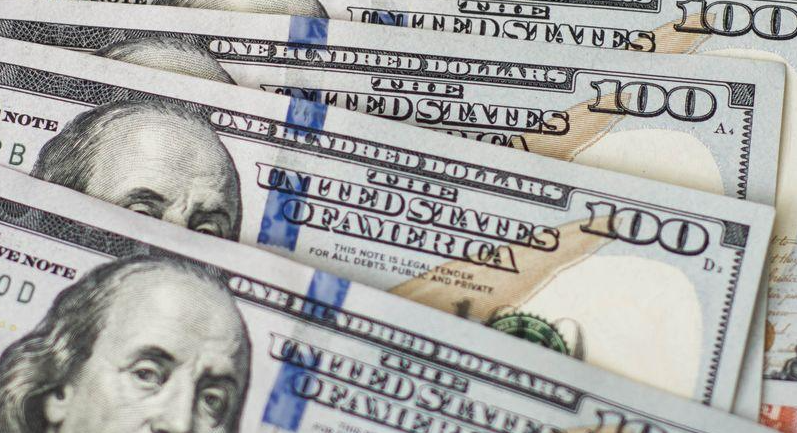The Fed's Next Move: Anticipated Rate Hike
Advertisements
In the intricate dance of financial markets, where speculation reigns supreme, the Federal Reserve (the Fed) finds itself under scrutiny like never before. As whispers of a potential interest rate hike emerge from the depths of Wall Street, astute bond traders are positioning themselves for what some see as a plausible shift in policy. The narrative is far from settled, as many analysts and investors oscillate between expectations of rate increases and cuts.
The pivotal moment for this speculation came on January 10 with the release of a strong non-farm payroll report, which painted a robust picture of the U.S. job market. Such data typically stirs the pot of monetary policy discussions, exhilarating some traders who cling to the notion that the Fed might lean towards tightening monetary policy. The consensus on the street, however, leans more towards an anticipated rate cut later this year, creating a stark contrast between the bullish bond traders and the often more cautious mainstream opinion.
Despite a more moderate inflation report that surfaced last Wednesday, reinforcing the narrative for a potential rate cut, the notion of a rate hike lingers. Market analysts interpret these conditions through the lens of a rapidly changing macroeconomic landscape. According to various analyses and options tied to overnight financing rates, there is currently about a 25% chance that the Fed increases rates by the end of this year. This is a notable change from the previous week when traders felt the probability was as high as 30% ahead of the Consumer Price Index (CPI) data release. Just a matter of weeks ago, raising rates wasn’t even on the radar, with 60% of options traders betting on further cuts, and 40% anticipating a pause in rate changes.
The dynamics at play are complex, as many in the financial community are betting not just on the Fed's decisions, but on the policies of the soon-to-be-inaugurated U.S. President. This upcoming administration is believed to bring forth tariffs and other policies that could spark inflationary pressures, challenging the Fed to recalibrate its stance. Phil Suttl, a former economist with the New York Fed and now at the helm of his own consultancy, is among those advocating for a possible rate increase in September. He believes that the central bank will remain hesitant to cut rates anytime soon. "I think they will not lower rates at all. This isn't a wild perspective," he remarked during a recent podcast.

Suttl is picking up on a trend that not only affects traders’ strategies but also shakes up economic fundamentals in the U.S. He points out that wage growth is on the rise again, something typically correlated with inflation scenarios. As the employment landscape shifts, so too does the monetary policy discourse. However, many in the bond trading fraternity argue that the prevailing sentiment still favors a dovish approach for the remainder of the year. The consensus suggests that traders have priced in a 25 basis point cut in rates, with chances of lower rates occurring at about 50%. This dovish outlook was echoed by Federal Reserve Governor Christopher Waller, who hinted last Thursday that if current inflation trends persist, policymakers might consider another cut by mid-2025.
The revelations from Waller impacted the bond market significantly, leading to a decrease in U.S. Treasury yields. Earlier in the week, yields on the benchmark 10-year Treasuries had soared to 4.81%, the highest since late 2023. This upward trend correlated closely with the Fed’s decision to start cutting rates back in September, creating a noticeable tug-of-war in investor sentiment.
Roger Hallam, the global head of rates at Vanguard, articulates a critical element of this debate: “If there are major inflation surprises in the coming months, the market may begin to entertain the idea of rate hikes this year.” The stakes have never been higher as the Fed grapples with its dual mandate: to stabilize prices while maximizing employment.
Looking back, officials at the Fed have shown a capacity for rapid policy reversals in the past. The year 1998 serves as a prime example, where officials implemented consecutive cuts in response to a financial crisis spurred by the Russian debt default and the near-collapse of Long-Term Capital Management (LTCM). Following these prompt cuts, the Fed pivoted again in mid-1999, initiating a rate hike in response to inflationary pressures emerging in the market.
Tim Magnusson, Chief Investment Officer at Garda Capital Partners, highlights the criteria necessary for the market to fully digest a potential rate increase: sustained inflationary rises would be critical. For instance, if inflation measures like the CPI were to inch up towards 3%, it might prompt a reassessment of the Fed’s current path. However, he opines that for the time being, the Fed is likely to adopt a wait-and-see approach.
Benson Durham, Piper Sandler’s global head of asset allocation and former Fed economist, offers a statistical perspective. When factoring in adjustments to term premiums, the betting odds on the Fed implementing at least one rate hike this year dip to below 10%. He observes, “Overall, the market seems to be quite balanced in its assessment of the risks associated with both hikes and cuts.”
This sentiment echoes the larger theme of uncertainty that permeates financial markets today. The interplay of economic data, trader psychology, and policy expectations creates a volatile mix that challenges conventional wisdom at every turn. Amidst this backdrop, it is evident that the future of the Fed's interest rate policy remains a gripping narrative, one that will undoubtedly resonate across the economy and influence myriad sectors from manufacturing to consumer spending. The journey ahead holds numerous twists and turns, and market participants are left navigating their best course through the labyrinthine channels of fiscal policy and economic indicators.
Leave A Reply